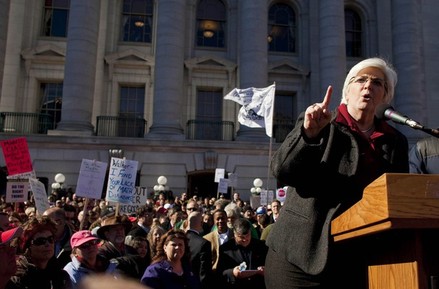Big Labor's Wisconsin Vendetta
WI Teacher Union Losing Its Teacher Healthcare Monopoly Big Labor will spend millions trying to remove Wisconsin Gov. Scott Walker from office but facts about the local economy and the finances of state government is making the argument for removal much more difficult. As the Wall Street Journal notes, Walker's reforms are working -- saving taxpayers money and putting people back to work: It's not turning out that way: The Apocalypse has not arrived for services, and Mr. Walker was able to balance the state budget without new taxes or looming deficits. They swore revenge for his offenses, and last week Wisconsin Democrats delivered what they say are a million signatures for the recall of Republican Governor Scott Walker... to campaign against reforms that have already saved taxpayers tens of millions of dollars and rescued the state from a budget crisis. Game on. Since last summer, Big Labor waged and lost a bitter fight over the election of a state Supreme Court Justice and spent millions trying to recall Republican state senators. Last year state senator Spencer Coggs called Mr. Walker's plan "legalized slavery" while others predicted disaster for school districts and public services. In districts like Wauwatosa, Racine, LaCrosse and Eau Claire, the changes in health and pension contributions prevented layoffs that were expected to be widespread and in some cases allowed the boards not to fire a single teacher.






